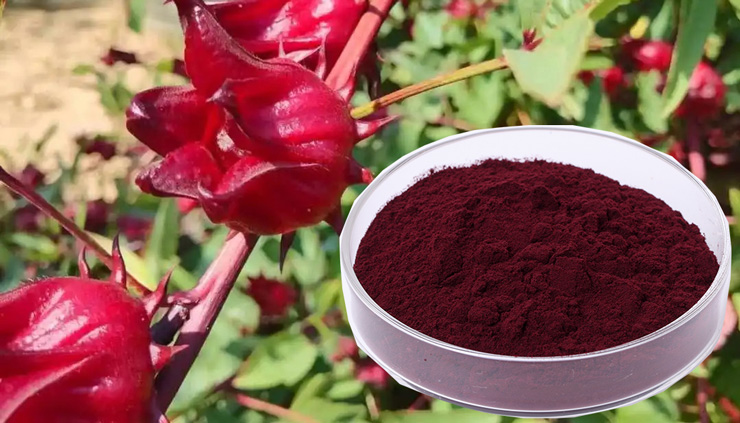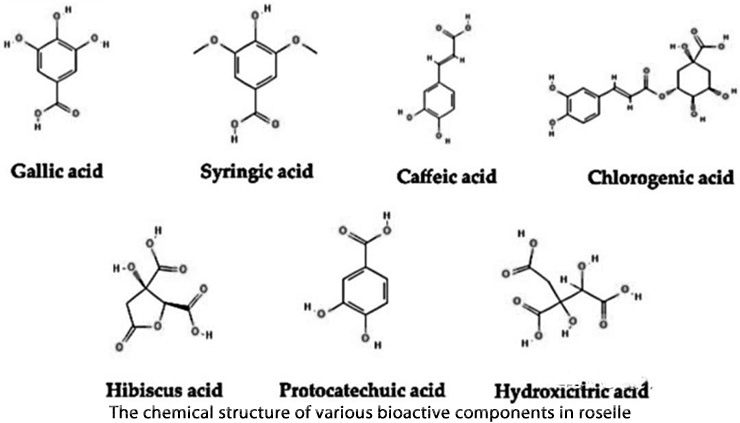Roselle Extract Major Producing Countries
Roselle extract is primarily produced in tropical and subtropical regions. The main producing countries and regions include:
- Africa
- Sudan: One of the world’s largest producers and exporters of roselle, known for high-quality dried calyces and extracts.
- Egypt: A traditional growing region, widely used for local consumption and export.
- Senegal, Nigeria, Mali: Key producers in West Africa, mainly used in food and traditional medicine.
- Asia
- China: Cultivated in southern provinces (Guangdong, Guangxi, Fujian, Yunnan), with rapidly growing extract production.
- Thailand: Extensively used in beverages and food processing, with significant exports.
- India: Grown in southern and central regions for local markets and extract processing.
- Latin America
- Mexico: A traditional producer, where roselle (locally called “Jamaica”) is used in drinks and medicine.
- Brazil: Increasing large-scale production, with some extracts exported.
- Other Regions
- Malaysia & Philippines: Small-scale cultivation in Southeast Asia, mainly for regional demand.

Extract Processing Countries
Besides raw material production, countries like China, the U.S., and Germany import roselle for advanced processing into high-value extracts (e.g., anthocyanins, organic acids) before re-exporting globally.
Introduction to Roselle Extract
Roselle extract is derived from the flowers of Hibiscus sabdariffa (Malvaceae family). It has various health benefits, including:
- Calming liver fire
- Reducing inflammation
- Quenching thirst
- Lowering blood pressure and lipids
- Improving mental clarity
- Eliminating free radicals
Applications in Food & Beverages
Roselle is a rising ingredient in food industries. Its calyx can be used in:
- Jams, candied fruits, high-end beverages
- Cold/hot teas, sodas, ice creams, cakes
- Canned foods, wines, champagnes
- Natural food colorants (vibrant red pigment)
- Nutritional supplements (rich in vitamin C for children & elderly)
Active Compounds
Roselle contains:
- Proteins, organic acids, vitamin C, amino acids
- Natural pigments & minerals
- Fresh calyx composition:
- Vitamin C (0.93%), Vitamin B (0.21%), protein (0.45%), pectin (1.39%)
- Sugars (2.55% as glucose), starch (1.76%), carotenoids (0.01%)
- Dried calyx composition:
- Anthocyanins (1–1.5%), organic acids (10–15%, e.g., citric & hibiscus acids)
- Reducing sugars (16%), fiber (11%), 17 amino acids (~1%)
- Additional bioactive compounds:
- Flavonoids, glycosides, phenols, alkaloids, resins

Health Benefits & Nutritional Value
Roselle is rich in antioxidants (vitamin C & anthocyanins), which combat free radicals, slow aging, and boost immunity.
Key Findings (2024 Studies)
- Cardiovascular Health: Anthocyanins help lower blood pressure, especially in hypertensive patients.
- Liver Protection: Extracts enhance detoxification and repair damaged liver cells.
- Diabetes Management: Regular consumption stabilizes blood sugar levels.
Extraction Methods
- Water extraction (cost-effective for polysaccharides & alkaloids)
- Ultrasonic extraction (efficient for large-scale production)
- Microwave extraction (preserves bioactive compounds)
Pharmacological Effects of Roselle
Modern research highlights its bioactive components:
- Phenolic acids (e.g., protocatechuic acid)
- Flavonoids (e.g., hibiscetin, quercetin)
- Anthocyanins (e.g., delphinidin-3-sambubioside, cyanidin-3-sambubioside)
- Organic acids (e.g., citric, hibiscus, tartaric acids)
Proven Benefits
- Antihypertensive Effects
- A 4-week trial (39 patients) showed reduced systolic BP (139.05 → 123.73 mmHg) and diastolic BP (90.81 → 79.52 mmHg).
- Mechanism: Vasodilation + ACE inhibition via anthocyanins.
- Antidiabetic Effects
- A 14-day study (diabetic women) found lowered fasting glucose (111.25 → 88.58 mg/dL) due to flavonoid-induced enzyme inhibition.
- Lipid Reduction
- Roselle powder decreased cholesterol, triglycerides, and LDL in obese subjects.
- Kidney Protection
- 28-day consumption reduced creatinine, uric acid, and albuminuria in diabetic nephropathy patients.







